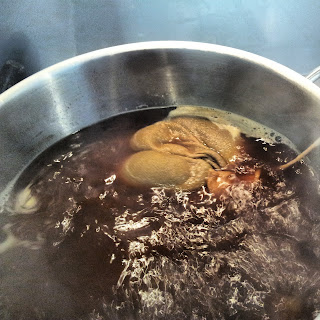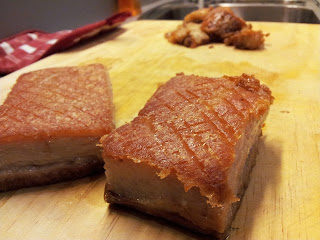
This recipe was originally created for Urban Harvest, do go check out their website for some great produce and other recipe ideas.
Pesto is a great way of using up a glut of of herbs you happen to have, it will extend the shelf life, and give you a quick and easy meal or jazz up a salad dressing or sandwich. It takes its name from the same root that pestle comes from and is traditionally made with one, although a food processor these days is a little easier. When using a machine care should be taken as the more you break down the leaves the greater the oxidation will be, so coarse chopped will taste fresher and more like the herb you expect. With that in mind it doesn’t hurt to put in a little preparation before the convenient machinery, this is as simple as making a paste of the garlic with the back of a knife or fine microplane, grind the nuts before you add the herbs, and have the lemon juice ready to add to help halt the oxidation.
The obvious partner to pesto is of course pasta, and although you may think homemade is hard work, I assure you it is not complicated or too time consuming. Two parts egg to three parts flour by weight, standard flour is fine, but you can use durum if you prefer just take into account that different flours absorb varying amounts of liquid so adjustments will have to be made. The minimum weight (NZ)* for size 6 is 53g, 7 is 62g, and 8 is 68g, so a rough calculation can be made by how many and what size eggs you use, however I recommend using digital scales, but if not, err on the side of less flour and add extra as needed.

Watercress and Basil Pesto
2 cups Watercress (packed), 100g
½ cup Basil (packed), 25g
½ cup Olive oil
½ cup Pine Nuts, 70g
½ New Zealand Shaved Parmesan, 40g
1 Large lemon, juiced
1 small clove garlic (optional)
Salt and pepper to taste
- Toast the pine nuts and pulse in the food processor to roughly chop, set aside.
- With the back of knife crush and make a paste out of the garlic, or grate it.
- Pack the watercress and basil into the food processor with the lemon juice, olive oil and garlic, pulse until roughly chopped.
- Add the pine nuts and parmesan, pulse until a rough paste has been formed.
- Taste and adjust the seasoning with salt and pepper, you may need to add a little more lemon juice, or a little more oil to loosen it.
- Transfer to a container with a lid and let it rest in the fridge so the flavours can develop, I like to leave it at least an hour before using it. It will keep about a week in the fridge, if it’s not eaten first.

Pasta (Pappardelle)
(2 large servings)
2 Eggs, Size 8 (70g each approx)
210g Flour (1 and 2/3 cups very approx)
- Pour the flour into a bowl and make a well in the center.
- Break the eggs into the well and using a spoon start working the eggs into the flour using a circular motion working from the inside out.
- When a dough begins to form use the heel of your palm to knead it together picking up any loose crumbs and working it to a relatively smooth dough.
- Securely wrap the dough in cling film and let it rest in the fridge for at least 30 minutes, it’s important to let the dough rest as it gives the flour a chance to hydrate.
- Divide the dough in two.
- Dust the bench with flour, I like to use a mixture of fine semolina and normal flour to dust with when rolling out the pasta, the semolina gives a nice texture to the final product, something for the sauce to hold on to.
- Roll the dough out into a rectangle and then fold the bottom third up and the top third down, rotate the dough 90 degrees and repeat. Folding ensures you get a nice bite from your pasta.
- When you’ve rolled the dough thin enough to get through the thickest setting on your pasta machine start using that to roll the dough.
- Run it through each setting a couple of times until you get down to number four, dusting it with flour as you go to prevent sticking.
- Take the long rolled out sheet of pasta and give each side a good dusting then roll it up gently, so you end up with a log of pasta, carefully cut 2cm slices, don’t apply too much downward pressure.
- Uncurl the pasta ribbons, dust lightly with flour and set aside. Repeat with the other half of the dough.

Putting it all together
- Get a large pot of generously salted water onto boil, when a rolling boil starts add the pasta and cook for 2-3 minutes.
- Cut the zucchini into ribbons with either a mandoline on the finest setting, or use a vegetable peeler. Sprinkle over some salt and then sauté quickly in a hot pan, just wilting the ribbons rather than cooking all the way through.
- Toss the cooked pasta with a generous spoonful of pesto and the cooked zucchini, serve in a large bowl with flakes of parmesan, finished with an indulgent drizzle of good olive oil.














